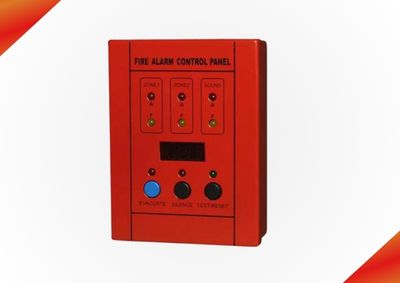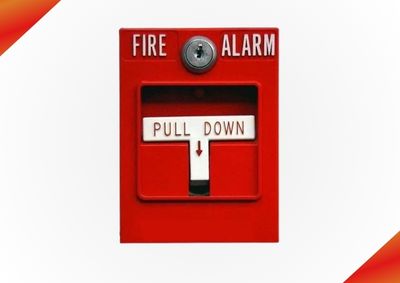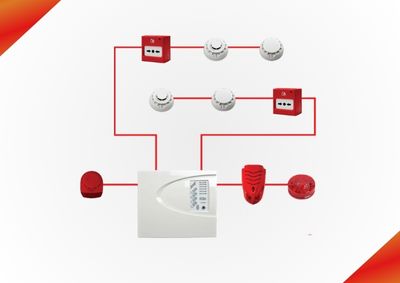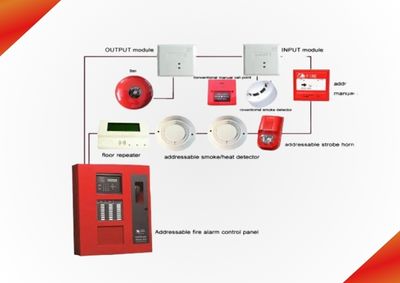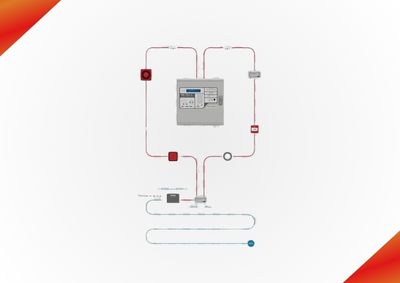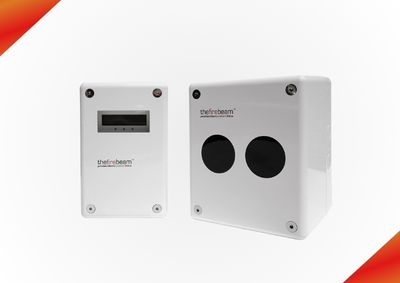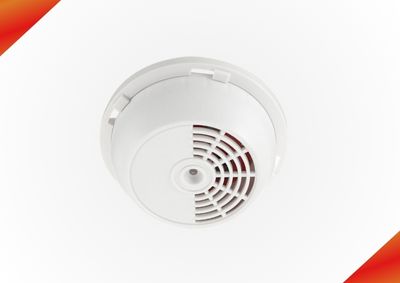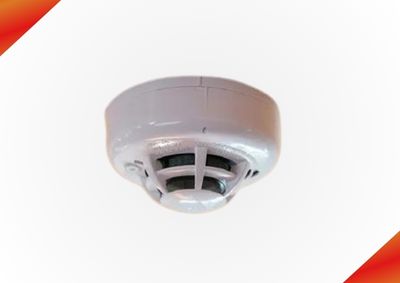Fire Alarm Systems
We are Manufacturer, Supplier, Services Provider of Fire Alarm Systems, Manual Fire Alarm Systems, Fire alarm control panel, Heat Detectors, Gas Leak Detectors
and our setup is situated at Pune, Maharashtra, India.
A fire alarm is a device that emits a loud, high sound to notify people when there is a fire inside a structure.
Fire Alarm Types
Manual Fire Alarm
A fire alarm system's controlling element is known variously as a fire alarm control panel (FACP), fire alarm control unit (FACU), or just a fire alarm panel. The panel receives data from equipment intended to detect and report fires, checks on its operational integrity, and offers automatic equipment control and transmission of data required to fire-proof the building in accordance with a specified order. The panel may also provide electrical power to run any connected starting equipment, notification equipment, control equipment, transmitter equipment, or relay equipment.
Detection
A fire alarm system consists of a number of interconnected devices that detect the presence of smoke, fire, carbon monoxide, or other emergencies and alert people by visual and audible devices. Alarms are set off by smoke detectors, heat detectors, dual criteria detectors, duct detectors, carbon monoxide detectors, and beam detectors.
Conventional
A typical fire alarm control panel uses one or more circuits that are wired in parallel to initiating devices. When any sensor's environmental effect surpasses a set threshold, these sensors are designed to drastically reduce the circuit resistance. A standard fire alarm system's information density is only as high as the number of these circuits it uses, as shown in the diagrams.
The building is separated into distinct parts or zones to make it easier to locate and put out fires there. One kind of zone border is the floors of a multi-storey building. One manual call point, fifteen to eighteen smoke detectors or heat detectors, and a hooter can all be found in one zone.
Conventional panel types according to zones: 6-, 8-, 10-, and 12-zone systems 14-Zones.
Addressable
The alternative is an addressable fire alarm system that comprises one or more circuits with detectors connected in parallel, and each detector has a unique identification (address) on the circuit. When the conditions for an alarm signal are satisfied at the detector, an alarm signal is transmitted via the circuit to the fire indicator panel or state.
In an addressable system, each detector has the ability to identify itself and its current status. Over the years, the level of sophistication of detectors and systems has greatly increased. Addressable systems are of 4 loop system, around 250 smoke detector, heat detector and manual call point and hooter. So, approximately 1000 Devices may be connected in one addressable panel.
Linear Heat Detection
These must be analogue addressable, fixed cum rate of rise devices that are intended to operate when the ambient temperature increases above a predetermined threshold or if the rate of rise exceeds the predetermined rate for a set amount of time. The control panel and the detectors must be able to exchange information about each other's addresses, sensor types, and analogue signals.
Beam Detector
Beam detectors operate under the idea of light obscuration, whereby smoke obstructs some of the beam's light, generally through absorbance or light scattering. A fire is detected once smoke has obstructed a specific amount of the transmitted light. As part of a broader fire alarm system, optical beam smoke detectors are frequently employed to find fires in large commercial and industrial buildings. A minimum of one light transmitter and one receiver are used in beam smoke detectors. By placing a reflector opposite the detector, light emitted from the transmitter is reflected, forming the light path.
Gas Leak Detector
The method of locating potentially dangerous gas leaks using sensors is known as gas leak detection. When a harmful chemical is present, these sensors often use an audible warning to warn people. Combustible gas sensors, photoionization detectors, infrared point sensors, ultrasonic sensors, semiconductor sensors, and electrochemical gas sensors are examples of common sensors. Infrared imaging sensors have started to be used more lately. There are numerous applications for each of these sensors.
Detection
When smoke, fire, carbon monoxide, or other problems are present, a number of devices that are part of a fire alarm system can detect them and alert people using visual and aural devices.
Smoke Detector
All types of residential buildings over 60 metres, all commercial buildings, all industrial facilities, hospitals, and assembly buildings have smoke detectors installed. When smoke penetrates the detector, an alarm is generated.
Heat Detector
Kitchens are equipped with heat detectors, which monitor temperature changes and sound an alarm if a rise in temperature is abnormal.
Dual Detector
Dual Criteria Type Detectors are installed in buildings where there is a possibility of either smoke or heat. Smoke, heat, or both can be detected by this detector.
Fire Action
For everyone on your property to understand what to do in the event of a fire, fire response signage is crucial.Dos And Don't
In the event of a fire mishap, equipment use signs direct a layperson on how to use fire fighting equipment.
Fire Alarm
Fire Alarm Signage is necessary so that people may readily find the Manual Call Point in the event of a fire and raise the alarm.
Double Hose Box
Detailed instructions on how to use the fire fighting system step by step, grasp the hose pipe, and stand firmly while fighting a fire are supplied on a sticker that is attached to a double hose box.
Voice Evacuation
Information about voice alarm systems used in conjunction with fire alarm and emergency communication systems is provided by the voice evacuation system. Voice communications are frequently employed to alert building occupants of emergencies. These notifications include crucial safety information that the building's residents must comprehend. Despite the fact that the knowledge in this book is based on many years of industry experience, it should only be used as a guide.
Aspirating Smoke Detection
Aspirating smoke detection is a technique that makes use of a central detector that continuously sucks air from a sample pipe network inside the protected area into the detector. Aspirating smoke and gas detection may be the answer to your challenging smoke detection demands, regardless of your application's conditions, including dusty, filthy, damp, highly vented, extreme temperatures, vibrations, or electromagnetic interferences. Very Early Warning Smoke Detection is a technique that enables the early detection of fires, allowing them to be examined and put out before they spread and cause damage, loss of life or property, or negatively affect business continuity. A large dynamic sensitivity range, numerous alarm levels, and active cumulative sampling are key benefits over traditional detection systems that allow for deployment.

